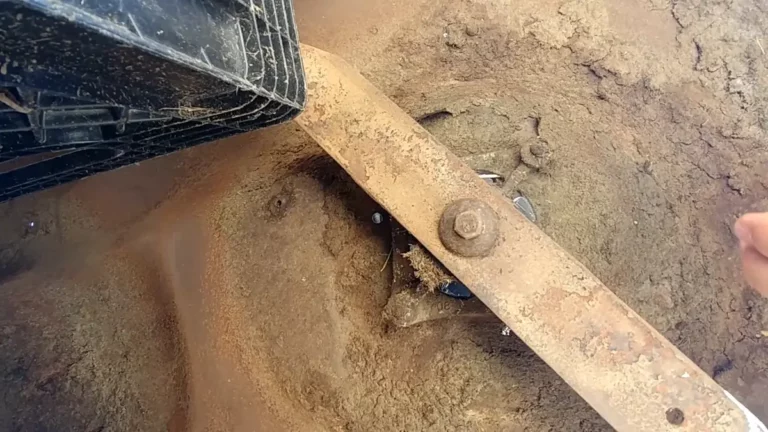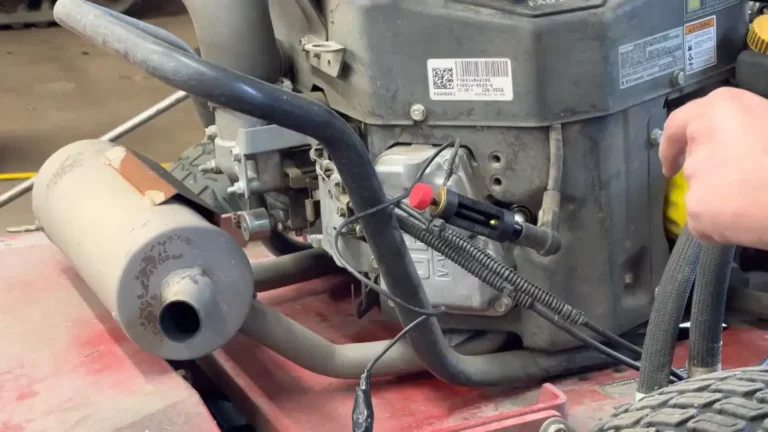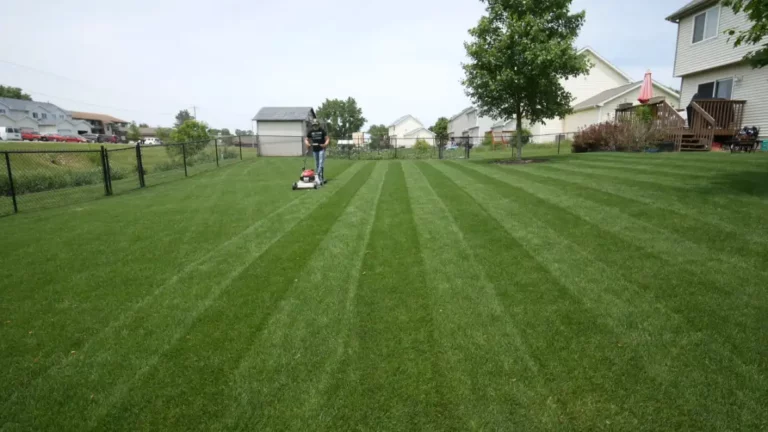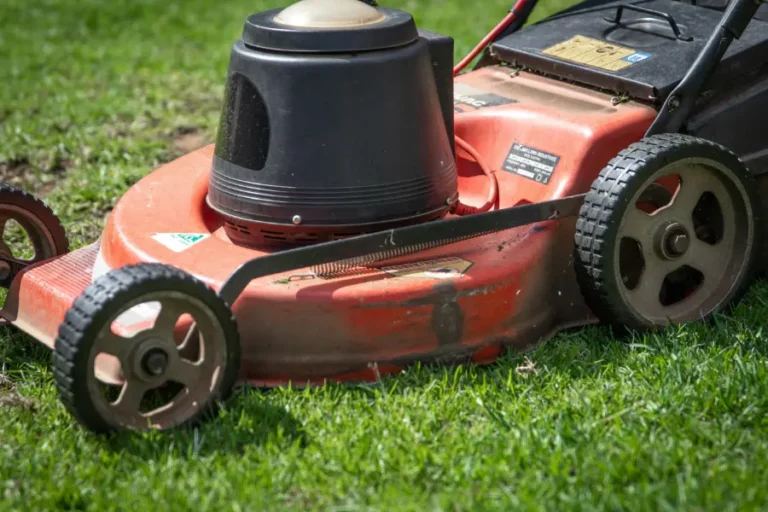Fixing Riding Mower Blades Won’t Engage: A Simple Troubleshooting Guide
Having a riding mower with blades that won’t engage when you need them can be incredibly frustrating. But fear not!
There are a few common reasons for riding mower blades won’t engage; such as faulty PTO clutch components, a worn-out manual clutch, or a damaged clutch cable.
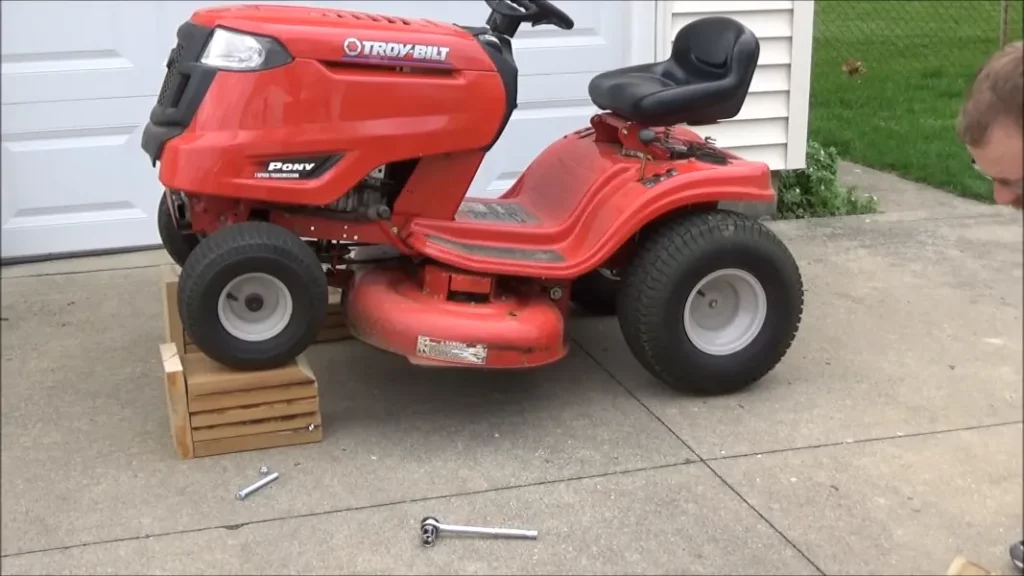
When Riding Mower Blades Won’t Engage? (Fixes Included)
To troubleshoot and fix the issue of riding lawn mower blades not engaging, you can try these following methods:
1. Faulty PTO Clutch
The PTO clutch connects the engine to the blades of a riding lawn mower. When energized, it engages the drive belt, which drives the blade rotation.
If the PTO clutch lacks power, has a defective solenoid, or is worn out, the mower blades won’t engage.
The Fix
Check PTO Clutch Power:
- Ensure the PTO clutch is receiving power.
- Use a multimeter to test for power at the clutch connection.
Inspect Clutch Solenoid:
- Examine the clutch solenoid for damage or wear.
- If it’s faulty, replace it.
Examine the PTO Clutch:
If the clutch is worn or damaged, replacement is necessary, as it’s not repairable.
Verify PTO Switch Functionality:
- Use a multimeter to check the switch for continuity.
- If there’s no continuity, replace the switch.
Faulty PTO witch
If you’ve replaced the PTO clutch and fuse, but the riding mower blades still won’t engage, the issue may lie with the PTO switch.
The PTO switch is responsible for supplying power to the PTO clutch. If it’s defective or broken, it may not provide the necessary power for the clutch to engage, resulting in non-turning blades.
The Fix
Test for Continuity:
- Use a multimeter to check the PTO switch for continuity. This verifies if there’s a continuous electrical path in the switch.
- If the switch lacks continuity in the “on” position, it’s likely defective and needs replacement.
Replace the PTO Switch:
If the PTO switch is indeed defective, install a new one. This ensures proper power supply to the PTO clutch, resolving the issue of non-engaging blades.
3. Issues with Drive Belt Pully
If the riding lawn mower blades are not engaging or turning correctly, one possible reason could be issues with the drive belt pulley system. The mower’s pulley controls the tension in the drive belt, which in turn turns the blades.
If the pulley freezes or doesn’t rotate properly, it can prevent the blades from engaging.
The Fix
Inspect Drive Belt:
- Look for wear, cracks, or fraying in the drive belt.
- Replace it if you find any damage, as a worn belt can hinder blade engagement.
Check Pulley:
- Examine for damage or obstructions.
- Clean any debris that might be causing issues.
- If the pulley is worn or damaged, consider replacing it.
Ensure Proper Tension:
Adjust the drive belt tension if it’s too loose. This ensures it can effectively engage the blades.
Safety Precautions:
Always remove the mower’s key from the ignition before working on the drive belt and pulley system for safety.
4. Week Battery
If the riding mower’s blades won’t engage after starting, a weak or dead battery could be the culprit. Electric PTO systems rely on a charged battery to power the blades.
The Fix
Check Battery Level:
- Turn off the engine, remove the key, and locate the battery compartment. Check the battery’s charge level using the gauge.
- A low charge might be the cause of the blade engagement problem.
Recharge the Battery:
- Use a charger designed for lawn tractor batteries to recharge it.
- Follow the manufacturer’s instructions for proper connection.
- Allow it to charge fully, then retest blade engagement.
Replace the Battery:
- If the battery is old or defective and cannot hold a charge, consider replacing it with a new one.
- Refer to the mower’s manual or seek professional advice for selecting the correct battery for your specific riding mower model.
5. Worn-out Manual Clutch
If your riding mower uses a manual clutch and the blades won’t engage, a worn-out or damaged clutch could be the reason.
The Fix
Inspect Clutch Lever:
- Check the clutch lever for damage or signs of wear.
- A damaged lever might not effectively engage the clutch mechanism. If issues are found, consider replacing the clutch lever.
Replace Clutch Assembly:
- If the clutch lever is in good condition but the blades still won’t engage, it’s possible the clutch assembly itself is worn out. In this case, installing a new clutch assembly is necessary.
- Refer to the mower’s manual or seek professional advice to ensure you select the correct clutch assembly for your specific riding mower model.
6. Blown Fuse
If the riding mower blades won’t engage, one possible reason could be a blown fuse. The fuse is used to protect the mower’s electrical system, and when it blows, it can disrupt the power flow to the clutch, preventing the blades from engaging.
The Fix
Locate the Fuse:
Consult the mower’s manual to find the fuse. It’s usually situated in the electrical system near the battery or engine compartment.
Check for a Blown Fuse:
Visually inspect the fuse for signs of damage. A blown fuse may have a broken wire or appear burnt.
Replace the Fuse:
If the fuse is blown, swap it out with a new one of the same capacity. Using the correct fuse is crucial for safeguarding the electrical system.
Seek Professional Help if Necessary:
If you continue to blow fuses after replacement, consider taking your mower to a repair shop or dealership.
Frequently Asked Questions [FAQs]
Why won’t my riding mower blades engage?
A worn-out or faulty PTO clutch and switch, cable, and a malfunctioning drive belt pully may be causing difficulty in engaging the blades on your riding mower.
What should I do if the drive belt is worn or loose?
If the drive belt on your riding mower is worn or loose, you may need to replace it with a new one that matches your mower’s specifications. Inspect the drive belt for any signs of damage, wear, or looseness.
What should I do if the troubleshooting steps don’t solve the problem?
If the previous troubleshooting steps do not resolve the issue of riding mower blades not engaging, consult your riding mower’s owner’s manual for specific instructions or contact a professional for assistance with diagnosing and fixing the problem.
